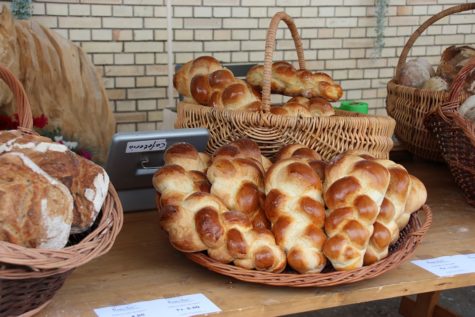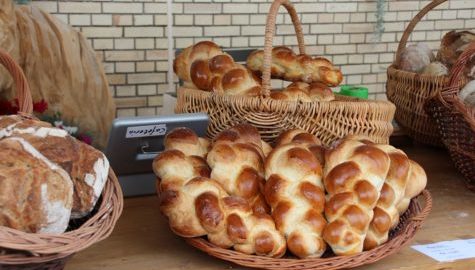
“See that God has given to y’all the Shabbat. Therefore God gives to y’all, on the sixth day bread, for two days.” (Exodus 16:29)
“Man does not live by bread alone.” (Deuteronomy 8:3)
I love fruit—mango season may be my favorite season—but if I had to choose only one food group for the rest of my life, it would be bread. Bread is the universal staff of life onto which most cultures have held since the dawn of domesticated agriculture and civilizations. It’s also one of the few examples of foods that’s universally identified within the Jewish tradition as Jewish. (I am not saying all bread is Jewish, just that there are breads with unique or deep roots in Judaism.)
Case in point: matzah. “For seven days you will eat matzah [unleavened bread cakes]…” (Exodus 12: 15)
Matzah, the flatbread unique to Passover and kitschy Brooklyn startups, is described in the Torah, detailed over the ensuing millennia in various commentaries, and maintained as an annual ritual for Jews of all backgrounds and identities. There are different manifestations of matzah—some are more cracker-like while others tend towards a large, dry pita; but, the chemistry is the same: flour + water + hot, dry oven = kosher for Passover matzah in under 18 minutes.
Some other popular, historically Jewish breads include bagels (real bagels; don’t be fooled by the circular breads sold at McDonald’s, Einstein’s, and many other bakeries that are not boiled before baking), jachnun, and Moroccan mofleta (served at their post-Passover mimouna celebrations).
Aside from bagels, none of these are quite so famous or ubiquitous as challah. This enriched bread is prepared for Shabbat and most other holidays (not Passover!). Recalling the showbreads in the temple, these loaves are historically grander and more refined than weekday breads. Furthermore, challah is presented in pairs, recalling the double portion of manna the Jews collected in the desert every Friday morning. For Shabbat evening in a traditional Jewish home, even if it’s a small gathering, the festive meal begins with a blessing over two loaves.
At a Shabbat meal I recently was welcomed to in Tel Aviv-Jaffa, one of the guests was so surprised to see two substantial challah loaves on the table. She asked why we needed two huge breads. Our host explained the tradition of remembering the commandment for Jews living in the land of Israel to tithe their bread (Numbers 15:20). The injunction to set aside a “challah” is the basis for the mitzvah of hafrashat challah, and a good reason for why the challah loaves for Shabbat are generally quite large. (Most orthodox rabbis hold that the dough must use between 3.66 and 5.5 lbs of flour to be eligible for a blessing.)
I don’t make such large batches of challah, meaning that I don’t normally say the blessing. I still want to do something special with my challah. When I bring challah to a friend’s meal, or if I am hosting, I want people to take a moment to reflect on challah and Shabbat, which is how I came to make challah messages.
At the end of the day (or week), messages and bread sacrifices are simply proverbial cherries in my practice. Simply serving challah and matzah, the two core Jewish breads, makes that meal significant. A blessing over these breads, an explanation, or even a pause before eating, helps these cultural carbs create a link to a national history and communal identity.
These foods with their gluten (or not), bind me to Jews across history because at their very core, they are Hebrew breadstuffs derived from the Torah. From atheists to ultra-Orthodox, Zionist and not, using these Biblical Hebrew names reminds us that we are connected.
Jews are not a unified people—including in many aspects of cuisine— but we are brought together by our cultural breads. Hopefully we will always have a space to break bread with others, giving us a delicious space to share of ourselves, our history, and our tradition.
Image Credit: Pixabay








